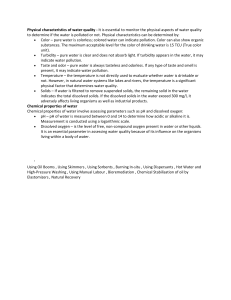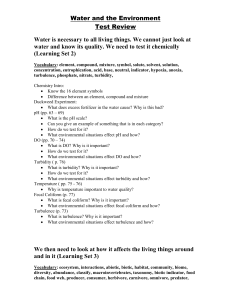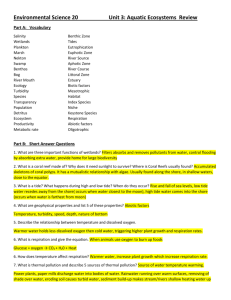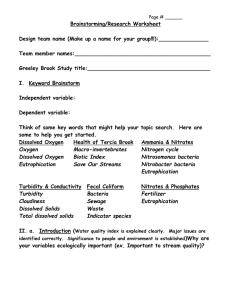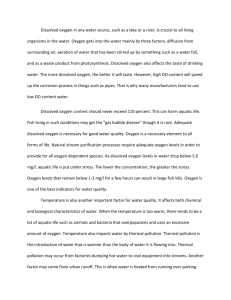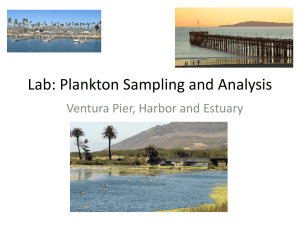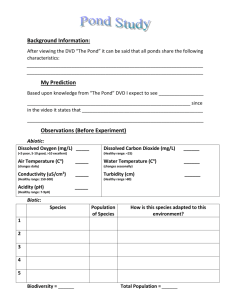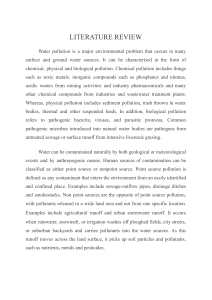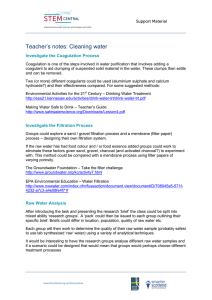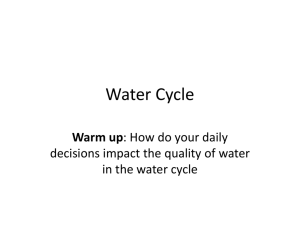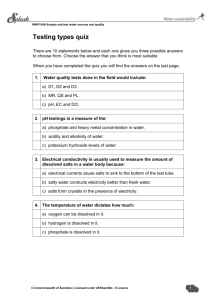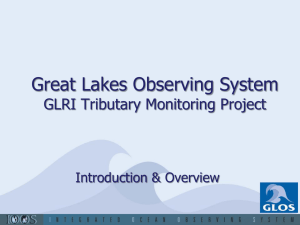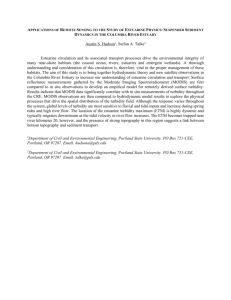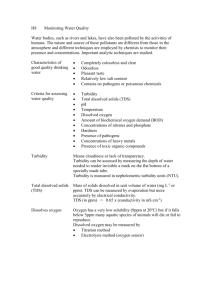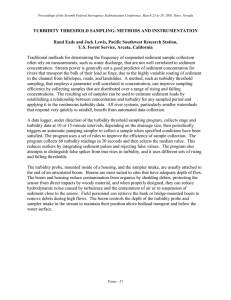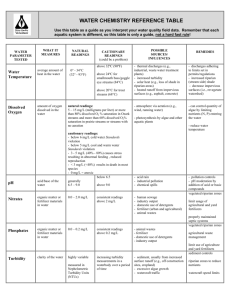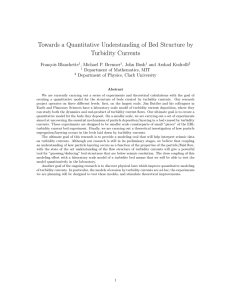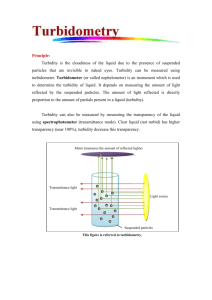Environmental Science 20 Unit 3 review
advertisement
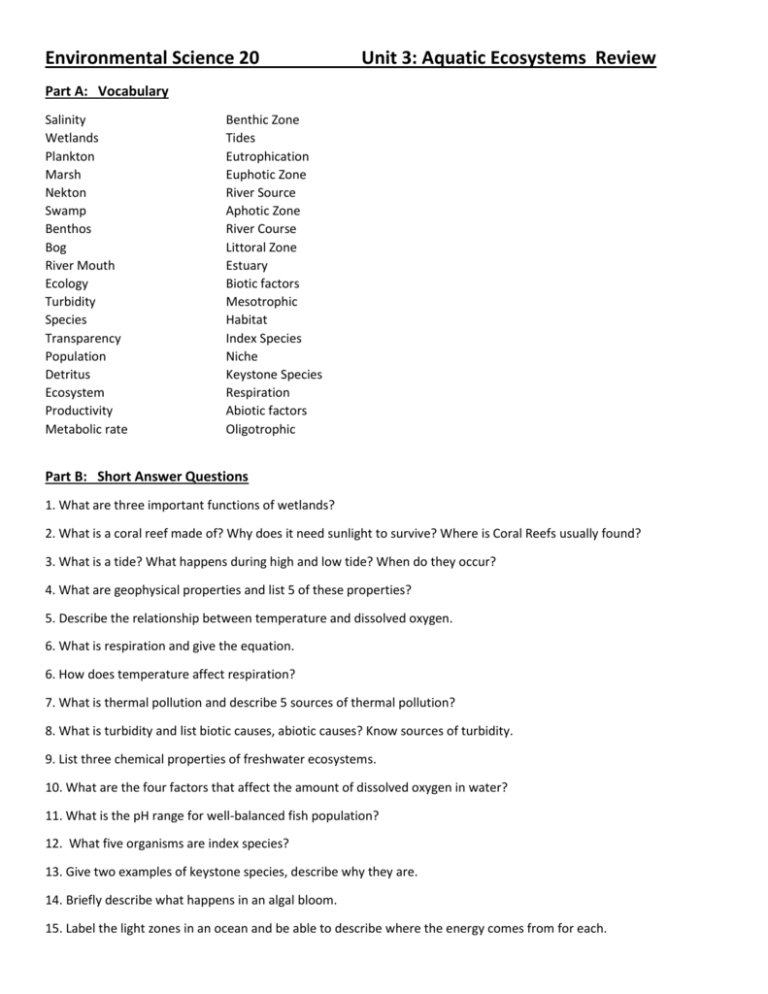
Environmental Science 20 Unit 3: Aquatic Ecosystems Review Part A: Vocabulary Salinity Wetlands Plankton Marsh Nekton Swamp Benthos Bog River Mouth Ecology Turbidity Species Transparency Population Detritus Ecosystem Productivity Metabolic rate Benthic Zone Tides Eutrophication Euphotic Zone River Source Aphotic Zone River Course Littoral Zone Estuary Biotic factors Mesotrophic Habitat Index Species Niche Keystone Species Respiration Abiotic factors Oligotrophic Part B: Short Answer Questions 1. What are three important functions of wetlands? 2. What is a coral reef made of? Why does it need sunlight to survive? Where is Coral Reefs usually found? 3. What is a tide? What happens during high and low tide? When do they occur? 4. What are geophysical properties and list 5 of these properties? 5. Describe the relationship between temperature and dissolved oxygen. 6. What is respiration and give the equation. 6. How does temperature affect respiration? 7. What is thermal pollution and describe 5 sources of thermal pollution? 8. What is turbidity and list biotic causes, abiotic causes? Know sources of turbidity. 9. List three chemical properties of freshwater ecosystems. 10. What are the four factors that affect the amount of dissolved oxygen in water? 11. What is the pH range for well-balanced fish population? 12. What five organisms are index species? 13. Give two examples of keystone species, describe why they are. 14. Briefly describe what happens in an algal bloom. 15. Label the light zones in an ocean and be able to describe where the energy comes from for each. 16. Fill in the table below Water Temperature How does increasing turbidity affect it? (Explain your answer!) How does thermal pollution affect it? (Explain your answer!) How does water speed affect it? How does water depth affect it? Dissolved Oxygen Respiration
